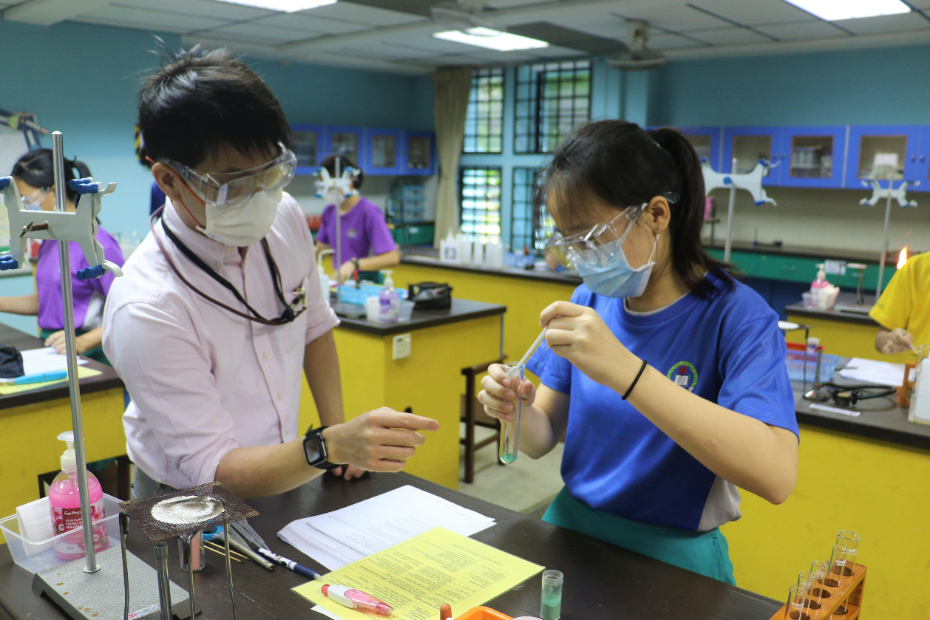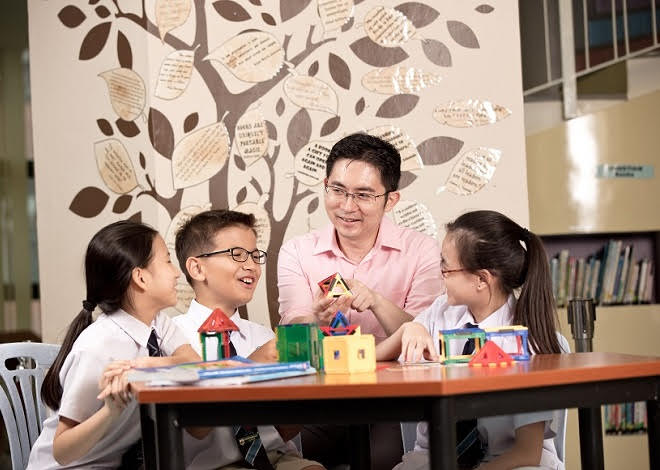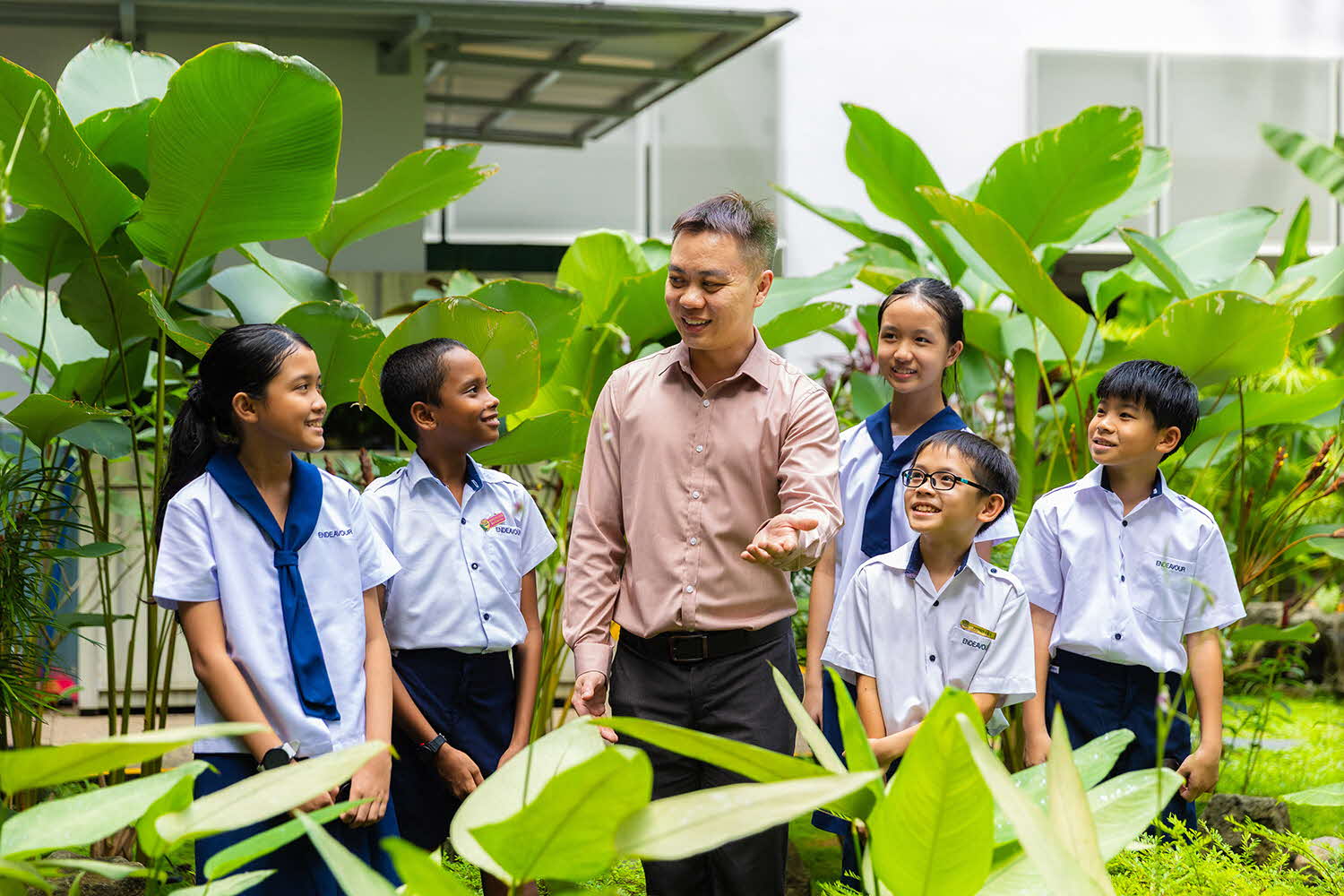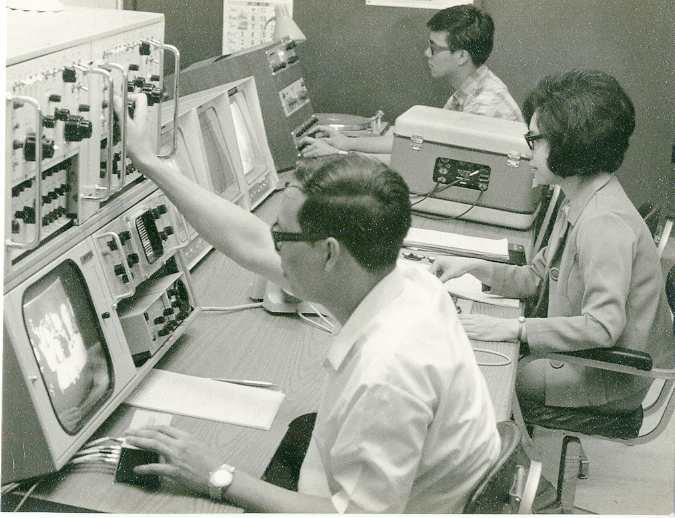Here’s a hypothesis – Students can pick up Science practical skills at home. Yes or no?
I decided to put this to the test.
When schools shifted into Full Home-Based Learning (HBL) in April, there were concerns that some subjects and activities wouldn’t transfer well online because they are hands-on and require special equipment. Science practical is one such activity.
While there are some simple experiments that primary school kids can do with everyday items at home, secondary-level Science practicals require specialised apparatus and a range of chemicals that can only be found in a lab.
Watching videos at home won’t cut it either. Conducting experiments is often a sensory experience. It is possible to observe colour changes, and perhaps hear the ‘pops’ from the hydrogen gas test in a well-recorded video, but how does one smell or sense the warmth from a substance from a screen? In addition, handling these chemicals and apparatus is an important skill in itself, and require steady hands, and even some dexterity that can only come with practice.
In short, there’s no way about it – students need to be physically in the lab for practical sessions. However, pre-lab online lessons can make the actual lab sessions a better learning experience. Here’s how.
Background: Advantages of learning from videos
Even before COVID-19, my colleagues and I had been trying a form of Blended Learning, which refers to a combination of online and in-class lessons, to teach Science practical. This is because time in the lab is always limited. Between getting the students to the lab, settling them in, briefing them on the day’s experiments, doing a demonstration, making sure they all have the required apparatus and chemicals, reminding them of safety rules and nagging them on things to look out for … we have just enough time for the students to do the experiment – if they are fast.
That’s why we tried to move some parts of the lab routine online. In previous years, my team and I got the students to watch videos demonstrating various lab techniques and chemical tests, such as how to test for carbon dioxide, before the practical sessions. Besides saving time, they got to see the reaction up close, and can replay the video if they missed the crucial moment.
This was especially useful this year as we have even less time in the lab due to Full HBL. However, an unexpected benefit was that the HBL experience allowed us to improve the online component, and fully reap the advantages of learning with technology.
Method: Preparing for lab sessions online
Since students and teachers alike are now very familiar with the Student Learning Space (SLS), we consolidated the videos that we have used in the past years into lesson packages on SLS.
Besides making it easier for students to access the videos, SLS provides us with a range of functions and even allow us to embed external tools to make the learning experience more complete. For example, I can include prompts at particular points in the video to remind students what they should take note of, or explain what they are observing. We also got students to read through and analyse the experiment notes on SLS – effectively transferring the ‘briefing’ and ‘nagging’ part of the lab session online as well!
We also included simple quiz questions after each video so that students can check if they have understood the concept correctly. The data from the quiz also allows me to identify students who may need more help, so I can follow up with them and watch out for them during the actual session.
Results: Observations from the lab
With HBL (online learning) before the actual lab sessions, I could immediately observe the difference in my students in the lab.
Of course, the transfer from online learning to physical handling of the chemicals is not 100%, but in the recent lab sessions, the students had higher success rate in performing the various chemical tests. I suspect this is because with the pre-lab HBL, students know what to expect and are more confident.
From the data gathered from SLS quizzes, I was also able to identify and help those who needed it. I checked in with the two students who mistakenly thought that limewater was supposed to be added to the reaction mixture (and stopped them in time!); and the student who was confused about how the dropper worked, while allowing other students who were more ready, more space to self-regulate their own learning.

In fact, it was quite easy to spot the couple of students who had not completed the online HBL lesson – they were still frantically flipping through the instructions and fumbling with the apparatus when the rest had already started with the experiment. They soon learnt their lesson and dutifully completed the HBL session the night before the next lab session!
The students were also clearly thinking more deeply. Instead of asking procedural questions, they were also able to ask me more reflective and analytical questions like “Why is white precipitate formed when carbon dioxide is present?” and “Will the experiment still work if I did this instead?”
Lastly, I was very happy to see that Blended Learning helped my students be more self-directed: some students brought their own notes that they had made during HBL. They used this as a checklist as they conducted the experiment – now, I don’t have to nag at them (well, not so much anyway)!
Discussion: Blended Learning and its possibilities
Our experiment with Blended Learning for Science suggests that it will be a useful approach to help students achieve competence in the lab, within a shorter period. Of course, nothing is like being in the lab physically. The thrill and anticipation you experience when you add the reagent a drop at a time into the beaker, observing the moment the colour changes and correctly identifying the unknown substance… that’s irreplaceable. But HBL can help students prepare, develop independent study habits and get the most out of each lab session. That’s invaluable too!
Blended Learning will play a greater role in schools going forward, and I am glad that my colleagues are all for trying out new ways to teach to improve the learning experiences of our students.
When my team shared about our success using Blended Learning to teach practical skills, my colleagues were game to take up this approach. Mdm Rosnah, one of the more senior teachers in my department, took time to understand the tools we used, and even modified the lessons to cater to the learning needs of the students in her class. Later, she shared with me that she liked having the lessons on SLS as it is easy for her students to refer to them whenever they need to. We also exchange our insights from the lessons and discuss how we can further improve on them!
Outside of the lab, I am excited to employ Blended Learning and give students the opportunity to explore more creative ways to express and demonstrate their learning. After all, being confined to a classroom and following a timetable can be limiting sometimes.
With a fortnightly Blended Learning model, for example, I see my students being able to acquire knowledge, discuss and clarify concepts with me in class and have a day of learning at home on their own – with the freedom to research, collaborate and experiment with different online and offline tools to present what they have learnt.
I am confident our students will surprise us with what they are capable of – and that’s another hypothesis that I’m keen to test and prove in the near future.






